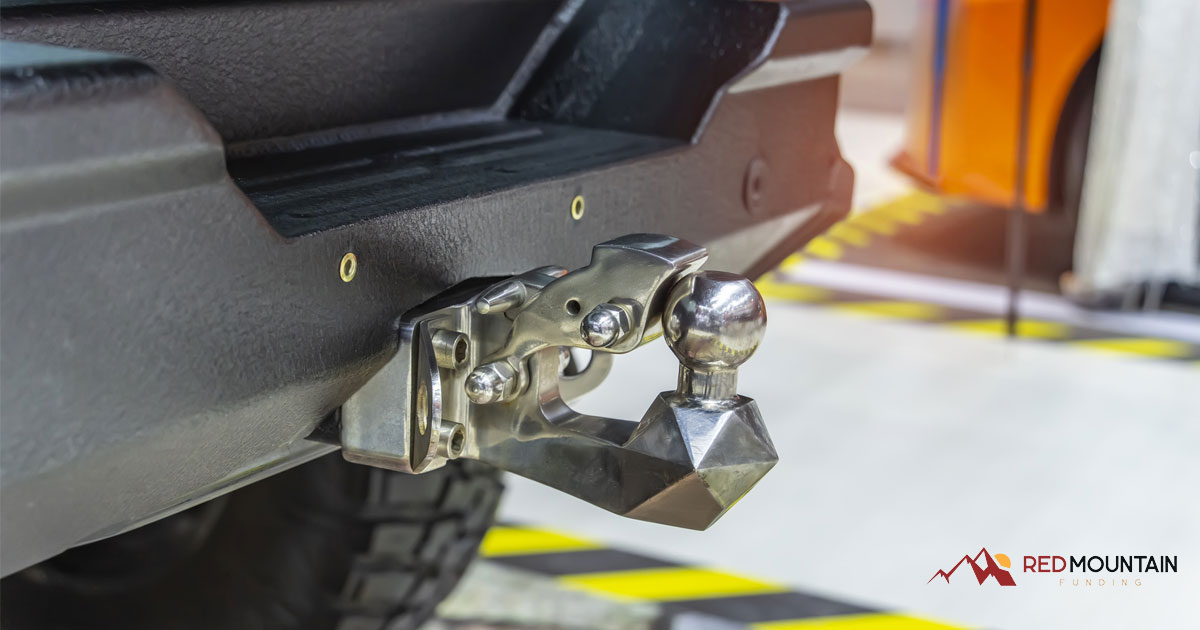If you are thinking about buying a trailer, a boat, or a large piece of machinery, the very first question you should ask yourself is: “Where am I going to put it?”
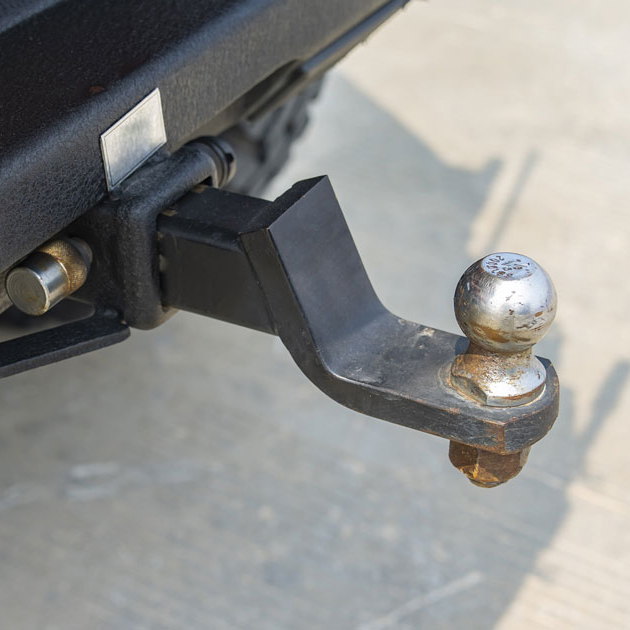
However, the second question you should ask yourself is: “Do I have the hitch for that?”
Picking the right trailer hitch is absolutely crucial if you want your car to last and whatever you’re pulling to get to your destination in one piece. Getting the wrong hitch for your rig can easily result in damage to your vehicle or your trailer, resulting in a huge stack of bills and canceled plans. Let’s discuss how you can avoid the bills and damage and make the right trailer hitch pick the first time, leaving you with plenty of cash left over for car accessories.
Suggested Reading: Essential and Car Accessories
The Pieces of a Successful Towing Setup
There are four key components of a successful trailer towing setup.
1. Your Vehicle
The first is your vehicle. The size of your car, truck, or SUV is going to determine how much you can reasonably tow. This is a matter of your engine power, but it also has to do with the total mass of the car, the spacing of the frame, and the geometry of your towing setup. All of these pieces determine what you can actually do.
2. Your Hitch
Once you’ve figured out what your car can handle, your hitch is going to determine the maximum load that you can effectively tow. That said, the bigger your hitch is, the more it’s going to weigh and the more it’s going to cost. It’s no use paying for a gooseneck hitch if you’re never going to use it to anywhere near capacity, and you’re going to be hurting your gas mileage every mile that you’re not using it.
3. Your Ball Mount
Between your hitch and what you’re towing is the towing ball mount, which goes into the receiver that you’re using. It must use a ball that matches the trailer that you’re using and the vehicle, giving sufficient drop or rise to connect the two and enough space between your vehicle and your trailer so you can maneuver how you need to.
4. Your Load
Finally, your trailer length, weight, and what you’re towing are going to determine what you need in all your other pieces.
Truck Hitches: Fit Guide
If you already own a truck or SUV and the trailer, boat, or other item you need to pull, the variable here is your tow hitch. Depending on the weight of the load and the length of the load, you’ll need to consider a few different classes of hitches. In fact, there are five different classes of hitches broken down by regulation, and each has a different maximum tow weight and tongue weight.
Tow weight is the total weight of what’s on the trailer and the trailer itself, whereas tongue weight is how much of that weight is applied to the ball when the trailer is mounted. A properly balanced load shouldn’t put more than 10% of the total load onto the tongue. However, it’s important (especially for large loads) to make sure to check your applied tongue weight either through a built-in scale or another method before taking off. Failing to do so could result in some unpleasant consequences.
As we list the hitch classes, note that nearly anything that a previous hitch class can do can usually be done with a higher class of hitch using an adapter, though there are some limitations on this.
Class 1 Hitches
Class 1 hitches can be attached to even the most compact of cars without any trouble at all. They are designed to take loads up to a maximum of 2,000 lbs and can support a maximum tongue weight of 200 lbs. The standard mount receiver on a Class 1 hitch is a 1¼ inch x 1¼ inch receiver, which is fairly easy to find a fitting to match.
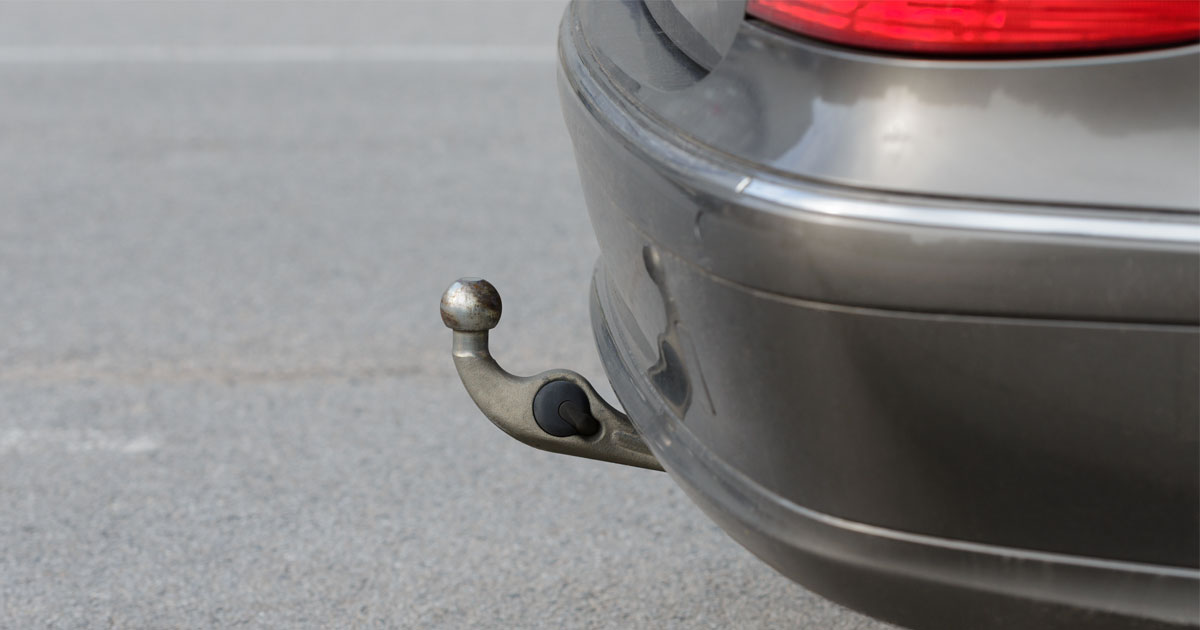
This is a good class of hitch for towing small lawn equipment and yard work supplies. It’s also the most common class for bike racks and the like. It’s not suitable for particularly long objects, even those that are under the maximum weight. As objects get longer, they exert more torque on the hitch.
Class 2 Hitches
Most full-size cars can support a Class 2 hitch, which can tow up to a maximum of 3,500 lbs and a maximum tongue weight of 300 lbs. They can also easily tow loads of appropriate weight that are up to 12 feet in length, unlike Class 1 hitches. These hitches are excellent for smaller boats, yard-size tractors, and similar equipment.
Class 3 Hitches
Class 3 hitches typically require at least a crossover vehicle, as there is a sizable jump between Class 2 and Class 3. Class 3 hitches are suitable for towing up to a maximum of 10,000 lbs and can support a maximum tongue weight between 750-1,000 lbs. They use a larger 2 x 2 inch receiver and will need larger mount fittings than their smaller cousins.
With a Class 3 hitch, you should be able to tow full-size boats, travel trailers, and other larger loads with relative ease.
Class 4 Hitches
Class 4 hitches are absolutely only for full-size trucks or SUVs and are suited for very large loads. These hitches can tow a maximum load of 14000 lbs and support a tongue weight maximum of 1,400 lbs. These can either be fitted with a 2 x 2 or 2.5 x 2.5-inch receiver, so if you have a Class 4 hitch, it’s important to double-check that your mounts are fitted for your vehicle.
These are primarily used for travel trailers that are longer than 12 ft and boats longer than 24 ft. They’re also suitable for heavy machinery towing that would be strictly impossible with a lower-class hitch.
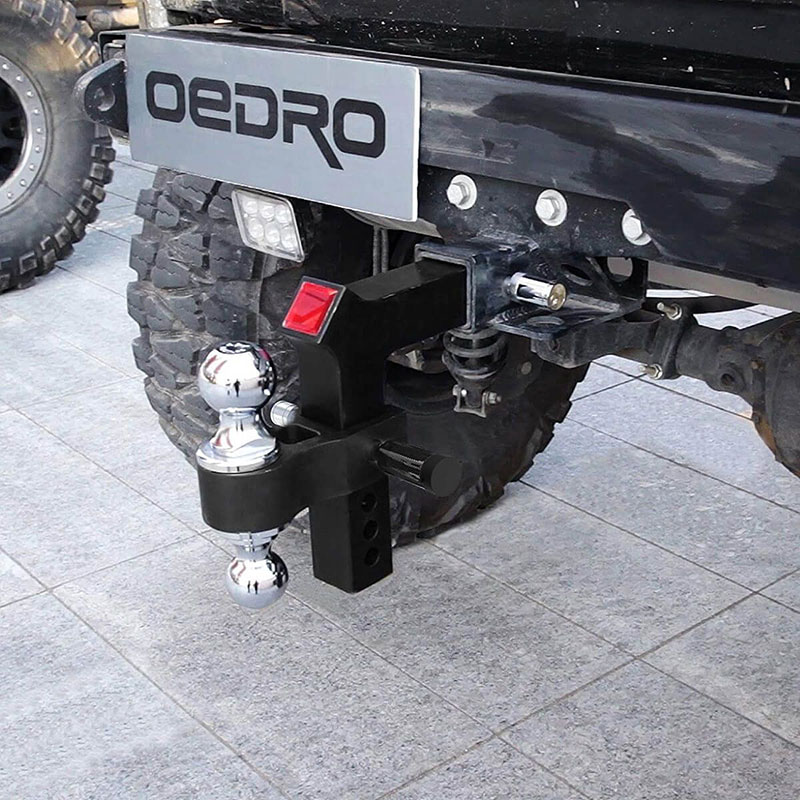
Class 5 Hitches
Class 5 hitches are broken up into a few unique types. These are the most serious class of hitch and will require a similarly intense vehicle for them to be useful.
5th-Wheel Hitches
5th-wheel hitches are installed above and over the rear axle so that the point of connection is at a strong point in the frame of the car, and force is applied more directly to the trailer connection. These are connected by a kingpin in a way that is very similar to a semi-tractor plate. These hitches can tow up to 20,000 lbs and have a tongue weight limit of 1,700 lbs.
5th-wheels are primarily installed on pickup or flatbed trucks for hauling heavy equipment, large machinery, or loads of cargo.[/one_half]
Gooseneck Hitches
Gooseneck hitches are exclusively designed for pickup and flatbed trucks as the hitch is installed on the bed of the truck near the rear axle in order to minimize the space that the hitch takes up on the truck and enable it to carry greater loads. Gooseneck hitches have a maximum tow of 30,000 lbs. Because of the design of the gooseneck, determining the tongue weight can be more challenging.
Goosenecks are almost exclusively used for industrial and commercial trailers. In particular, gooseneck hitches are very popular for livestock trailers.
Front-Mount Hitch
A front-mount hitch is mounted to the front of the vehicle and is primarily used for snowplows, scoops, cargo carriers, and winches. Installation and load capacity of front-mount hitches is much more difficult to estimate, as the construction of the front frame of vehicles varies much more from model to model than the back does.
If you’re installing a front-mount hitch, it’s absolutely crucial that you consult with an expert on front-mount installations before deciding to move forward with the installation.
Hooking Up to Your Hitch
Now that you have the correct hitch, you need to connect it to your vehicle. Your receiver will require one or multiple pins in order to lock it in place. Each size of receiver and each class of hitch will require a pin that is suitable for the weight of the load that you’re towing. Always make sure to check that the maximum weight of your hitch and your pin are matched appropriately, and that the fit of the pin is snug. A wiggly pin will introduce additional play into your receiver fitting and reduce your effective tow capacity.
Receiver adapters are available for fitting smaller mounts into larger hitches, but they will also reduce your tow rating due to small gaps between pins and adapters. Err on the side of caution when you’re using a receiver adapter and run significantly lighter loads than you would if you were working without one.
Lining Up Your Trailer and Your Mount
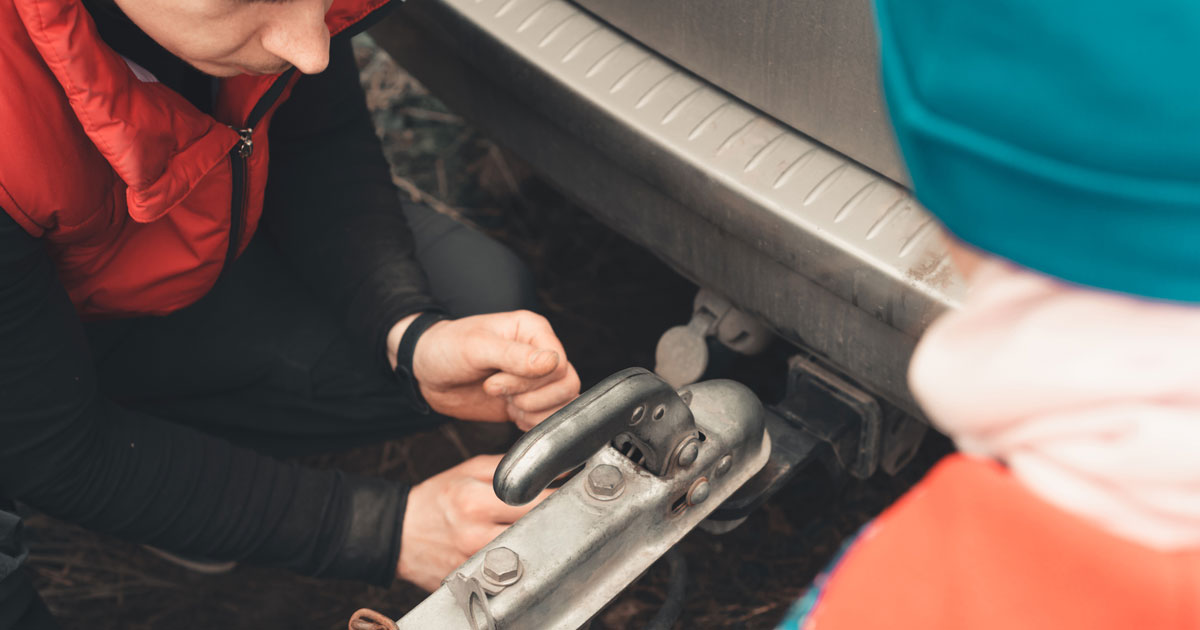
While a lot of mounts are adjustable, not all of them are. In order to get the right match, you need to measure the distance between the bottom of the trailer coupler and the top of the receiver tube. You subtract these two distances from one another, and that will give you the height adjustment that you need in order to put your ball mount at the right level for your trailer coupler.
Variety in Ball Mounts
Ball mounts come in a wide variety of types, and also need to be evaluated for their maximum load capacity. Depending on what you need and what you’re connecting to, you may not be able to use the full towing capacity of your hitch. Here are some considerations for choosing a ball mount.
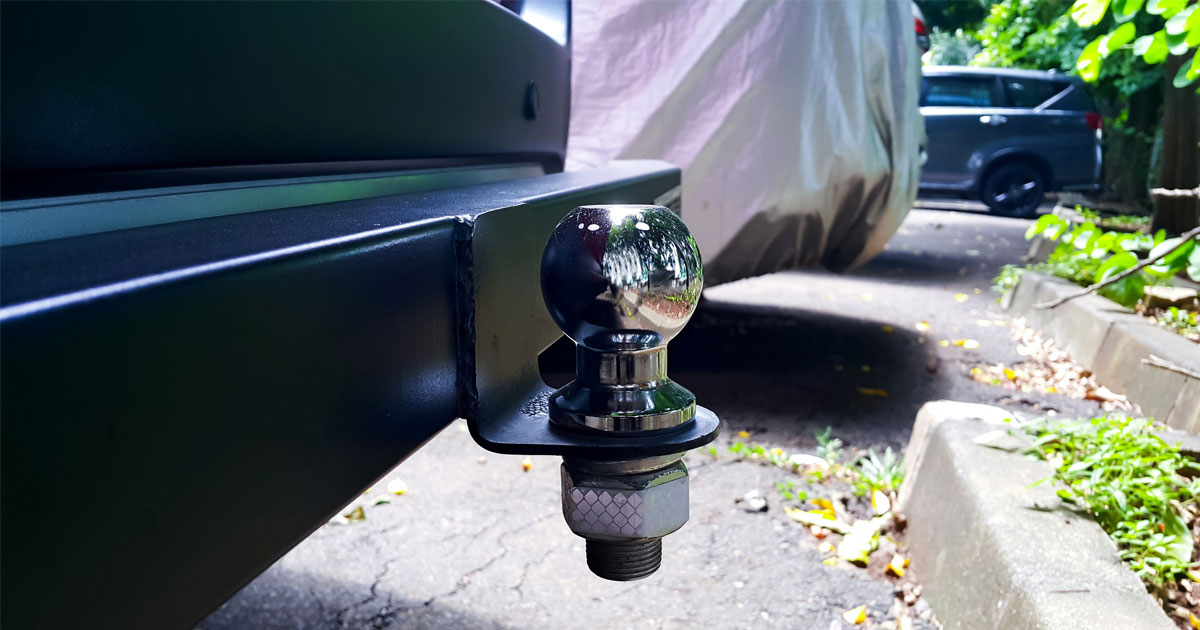
Material
It’s no surprise that what your ball mount is made of will determine how heavy it is and how much it can tow. Hollow shank mounts will be lighter and less expensive, while solid shanks will be stronger and have higher use-case caps. Aluminum shanks are more expensive, but they also save a lot of weight.
What It Can Do
Different mounts have a few different kinds of additional functionalities that they can provide.
- Extended Mounts – These are good for vehicles that would like more room between the trailer and the vehicle on turns, but they lower tow capacity due to higher torque on the arm of the mount.
- Adjustable Mounts – This is a mostly standard feature these days, allowing your ball mount to be raised or lowered to fit multiple trailers more easily. Adjustable mounts are ideal for someone who has more than one thing to tow.
- Mount Scales – This tool reads out the weight of the tongue load and is excellent for letting you judge your loads, especially if you’re using your hitch near its limits.
- Weight Distribution Mounts – This is the category that has the most flexibility. Weight distribution mounts can cushion the motion of the mount with bands, giving the connection a sort of suspension that allows it to gently navigate difficult terrain.
- Pin Ball Mounts – These are loud but allow your mount to attach to ring couplers. These let the trailer move in 3 dimensions, which lets you go over difficult terrain more easily.
Have Fun Hauling
If you have a car lover in your life who has just purchased a trailer, camper, boat, or other towable item, Oedro hitches are a can’t miss accessory. If you’re still in need of inspiration, it’ll probably be worth your time to check out our gift guide for car lovers.
I’m a kid at heart disguised as an auto researcher and business owner. I’ve always enjoyed providing insight in the form of reviews (anime, video games, autos, etc.) When I’m not researching, I’m spending time with my family, driving my Dodge Challenger, riding my motorcycle, and finding new entrepreneurial pursuits.
